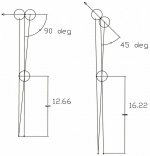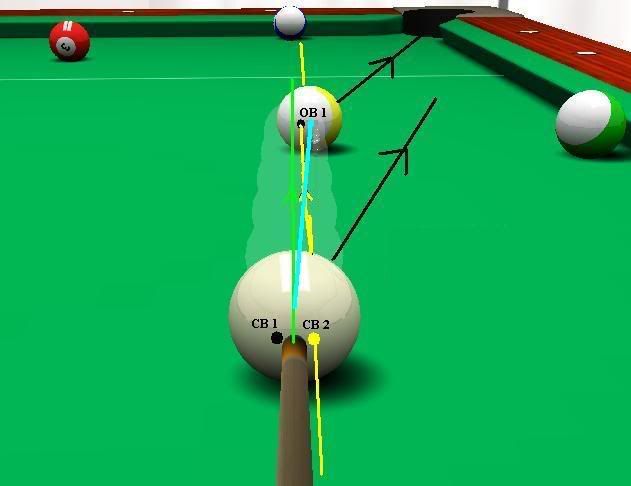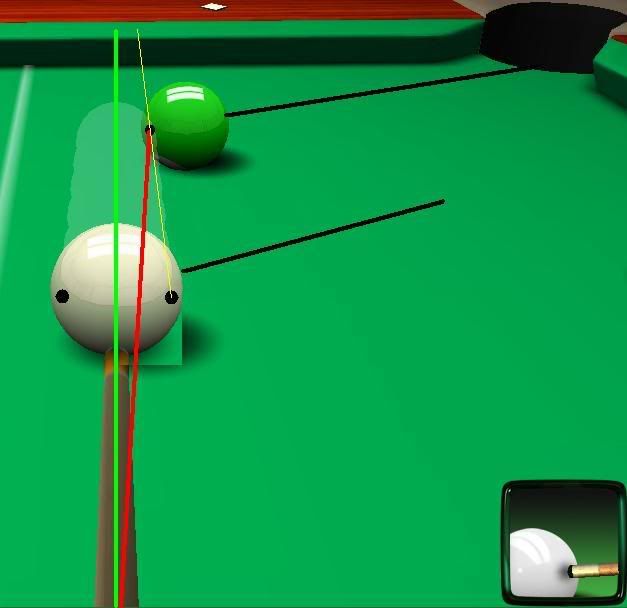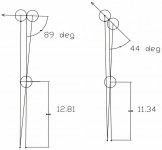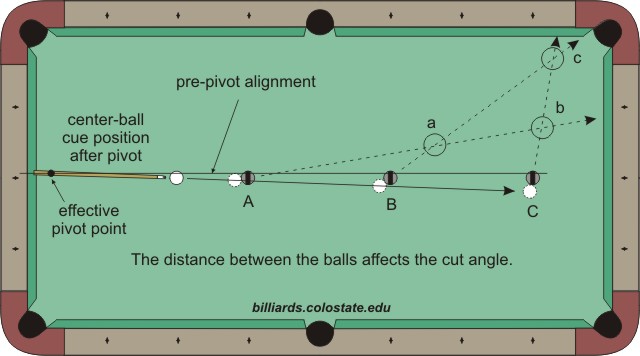Shots A,B,C, as presented, require a right to left cue movement. That right to left pivot will seem unnatural for most right-handed players. In PRO ONE the movement is always from left to right for right-handed players. In PRO ONE, shots A,B,C can be pocketed with a left to right, half-ball pivot. Constant left to right pivoting for right-handed players is the major variation of PRO ONE from Hal’s method of CTE. For lefties, the pivot would always be from right to left.
Within a straight line range of shots from Shot A to Shot C, there are at least 500 more shots that could have the same CB-OB relationship. All 500 shots can share a half-ball pivot for successful pocketing.
If I were to shoot any one of the 500 shots within the range of A to C, I would not worry about precision math calculations or exact wording to guide my every move. I’d want my subconscious mind and body to take over.
For any of the 500 shots I would first see CTE and align to CTE. Then, I would visually shift my sight to the right cue ball edge and allow my body/eyes to move slightly ‘right’ across the CTEL. My cue is following with its initial left to right movement. My eyes would have already located center cue ball at this stage of the process. My bridge hand would be sliding up the left cue ball edge line and arcing in toward center cue ball. During this ‘bridge hand slide’ my angled cue would arc by the left edge of the cue ball. My ‘bridge hand slide’ and arcing cue would land at center cue ball simultaneously. {My final bridge distance at actual aim would be about 7.5 inches. My bridge distance would not have been constant during its movement to center cue ball.}
What could the range of my total eye/body movement or offset across the CTEL be for the 500 shots in a line from A to C? Let’s call it a range of 3/8 of an inch. Divide 3/8 by 500 to determine my incremental eye location or visual aim difference for each of the 500 shots. I get .075 of an inch. One’s visual and bodily intelligence can easily manage all 500 shots with uncanny precision. It all comes back to the fact that there are countless shots on a pool table. A great way to handle the vast array of shots is to use CTE.
Within one’s brain, there are 2 separate physical locations that separately deal with objects and spacial relationships simultaneously. OBJECTS: table surface, cue, balls, rails and pockets---SPACIAL RELATIONSHIPS: body/cue/table distances, varying bridge distance, CB/OB distance and OB/pocket distance. This can get very complicated! { Knowledgable PHDs can be extremely challenged when assigned to write about the inner workings of what happens when a person touches his finger to his nose.} I’d personally like to see a doctoral dissertation that describes the inner workings of what a pool player does mentally, visually and bodily to successfully execute a shot such as shot C.
Hal Houle learned that through CTE a player can quickly tap into the purity of aiming. A key factor in CTE is that the shooter learns to largely disengage his conscious mind from the aiming process. Your mind’s eye can easily perceive each of the 500 shots referenced above as ‘one’.
Subconscious aiming by way of CTE is available to any player within days or weeks and certainly no longer than months after having learned the process. CTE can be learned in as little as 5 hours. Does this mean you’ll be pocketing balls like a pro in short order? No, but your process of arriving at an actual aim will be very pro-like in short order.
IMO, CTE is nothing less than a precious gift, a gift from its inventor, Hal Houle.
Stan Shuffett
